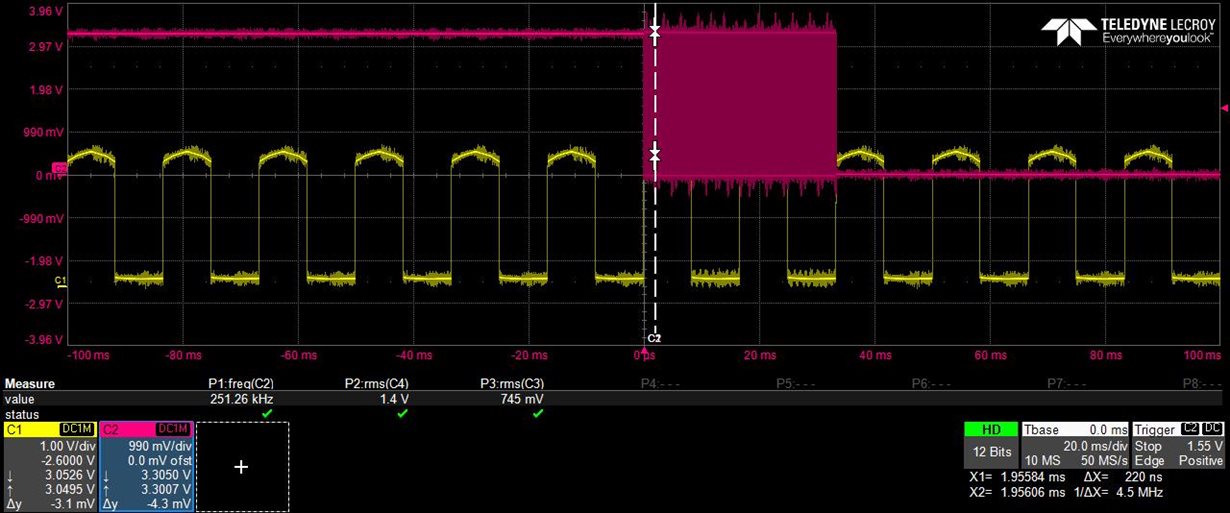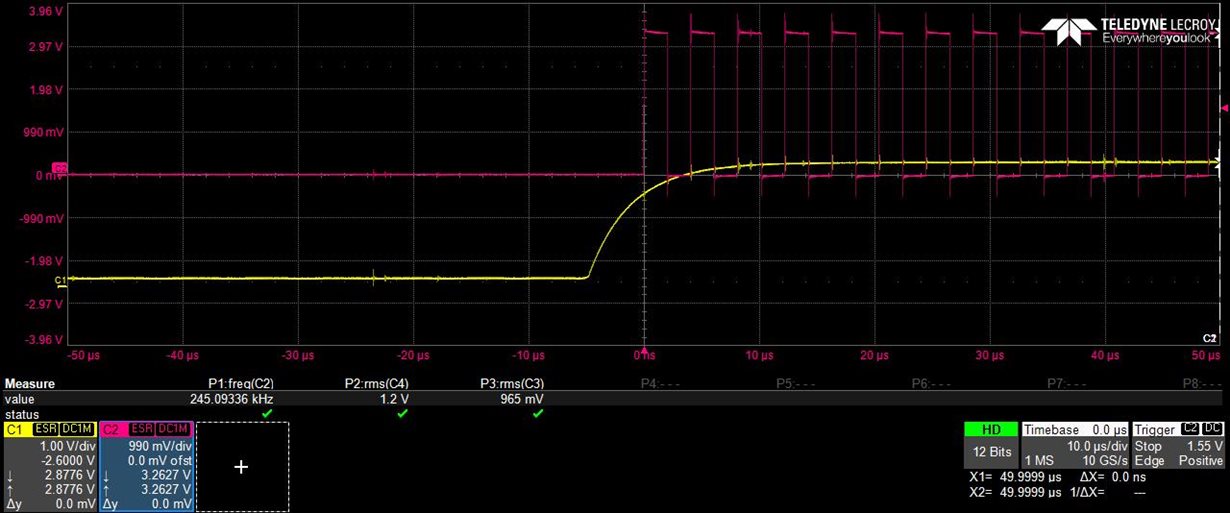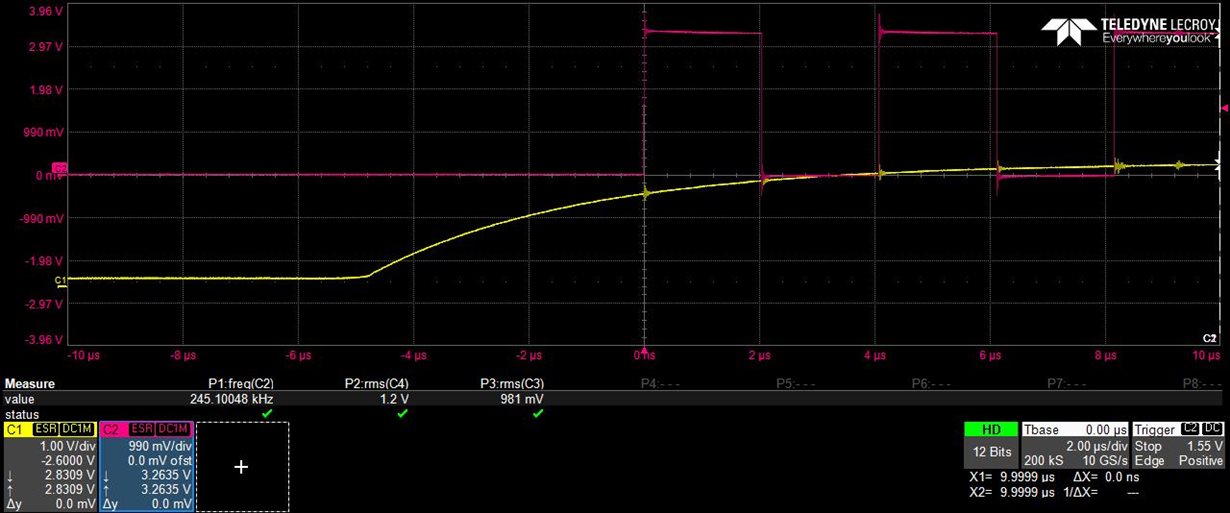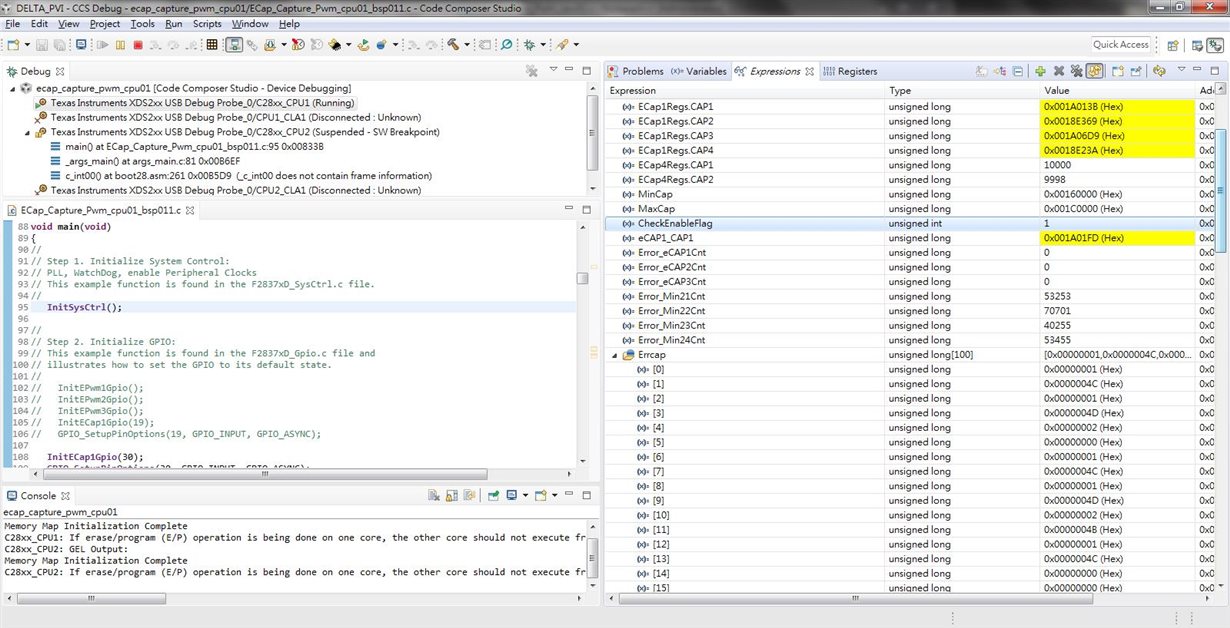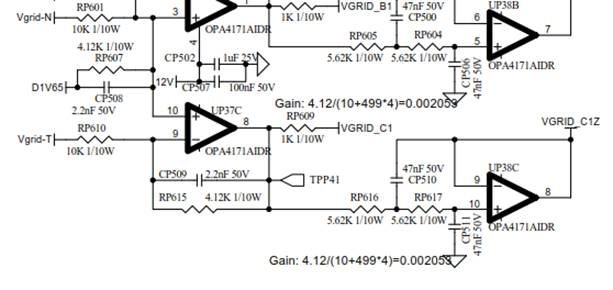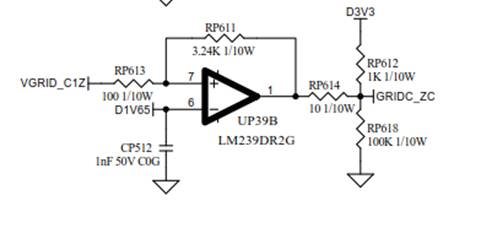Hi ,
I use eCAP1,eCAP2,eCAP3 to detect the zero-crossing of 3-phase power supply system.
Normally, the cap1, cap2, cap3, and cap4 values in the cap register are between 0x00180000 & 0x001B0000.
However, when the slope of the input signal is gentle, there is a chance that ecap will malfunction.
When the malfunction occurs, no noise is observed from the oscilloscope.
From the CCS debug, it will capture noise such as CAP1=0 and CAP2=1.
Any idea about why the capture register equal zero noise occurs when the signal slope is flat?
-------------------------------------------------------------------------------------
Red: error detect trigger Yellow: eCAP input signal
When an eCAP error occurs, store the CAP1, CAP2, CAP3, and CAP4 values in the cap register into the Errcap buffer to see if it captures noise.
In Errcap, some CAP value is zero.
CAP1 Polarity is rising edge,
CAP2 Polarity is Falling edge,
CAP3 Polarity is rising edge,
CAP4 Polarity is Falling edge,
------------------------------------------------------
best regards,
Simen


